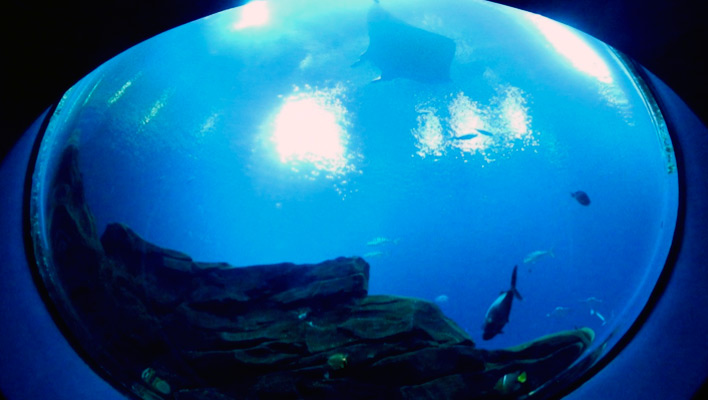With the Toledo Zoo’s Aquarium currently undergoing a $25.5 million renovation and the new Aquarium slated to open in 2015, curious Zoo visitors frequently ask what exhibits the new Aquarium will feature. In this installment, let’s continue our exploration of these new exhibits with a look at the different ways some of the exhibits will allow visitors to view the animals.
Please bear in mind that the planning process is fluid; things can and will change before the Aquarium’s grand opening. Additionally, the names for the exhibits are only placeholders—the final names may reflect helpful donors or be more descriptive of the exhibit itself.
In addition to being much more interactive for our visitors, the new Toledo Zoo Aquarium will present aquatic life in different and novel ways. The old Aquarium offered viewing of the animals through flat, rectangular panes of glass. The similarity to paintings on a wall of a museum made the presentation of animals seem a bit old-fashioned. As the design process progressed for the new Aquarium, we explored different ways to allow the visitors to observe the animals. The following exhibits are examples of these unique viewing opportunities.
Schooling fish exhibit
 This nine-foot-tall cylinder exhibit stands out in the main public area of the new Aquarium, right across from the shark/ray touch pool. The 54-inch-tall, clear acrylic portion of the cylinder will showcase many silvery schooling fish, all swimming in the same direction. Although the curved tube will distort the fish a bit, a round tank like this is the best way to exhibit constantly swimming fish like these.
This nine-foot-tall cylinder exhibit stands out in the main public area of the new Aquarium, right across from the shark/ray touch pool. The 54-inch-tall, clear acrylic portion of the cylinder will showcase many silvery schooling fish, all swimming in the same direction. Although the curved tube will distort the fish a bit, a round tank like this is the best way to exhibit constantly swimming fish like these.
Moon jellies
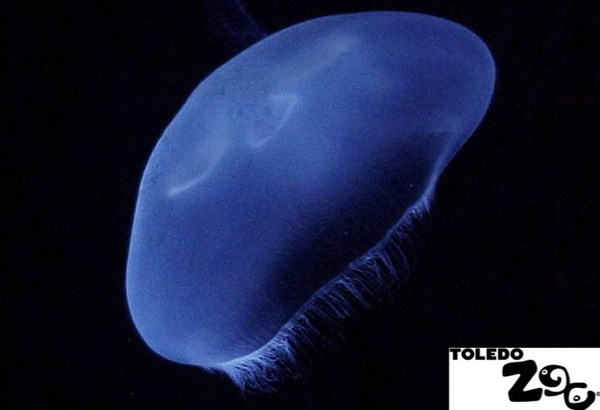 At almost 1,000 gallons, this 10-foot-tall exhibit has an acrylic cylinder, five feet tall, filled with moon jellies. It is set in a wall and can be viewed as a half-cylinder from either a conference room or from the public viewing area. Above the exhibit is a series of LED lights connected to a controller that visitors can operate. By turning a dial, they can change the color of the lights above the jellies. Since these animals lack eyes, they don’t notice any difference, but the visitors sure will!
At almost 1,000 gallons, this 10-foot-tall exhibit has an acrylic cylinder, five feet tall, filled with moon jellies. It is set in a wall and can be viewed as a half-cylinder from either a conference room or from the public viewing area. Above the exhibit is a series of LED lights connected to a controller that visitors can operate. By turning a dial, they can change the color of the lights above the jellies. Since these animals lack eyes, they don’t notice any difference, but the visitors sure will!
It turns out that different color light causes different parts of the moon jellies to stand out; red light enhances their internal structure, for example, while blue makes their tentacles glow. Under regular white light, the moon jellies turn clear and almost disappear from view (which is a good way for them to avoid predators in the wild!).
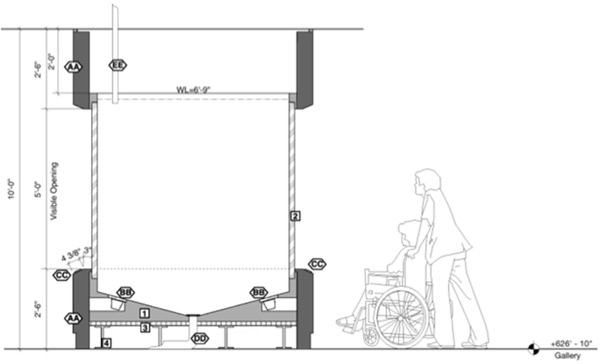 Gulf of Mexico – Sharks, Rays, and Turtle exhibit
Gulf of Mexico – Sharks, Rays, and Turtle exhibit
As mentioned in the fourth installment of this series, this exhibit will house pelagic-swimming species from the Gulf of Mexico. Part of this exhibit’s unusual design is that one of the two expansive viewing windows is actually canted outward 10 degrees at the top, allowing visitors a better view of the sharks as they circle near the top of the tank.
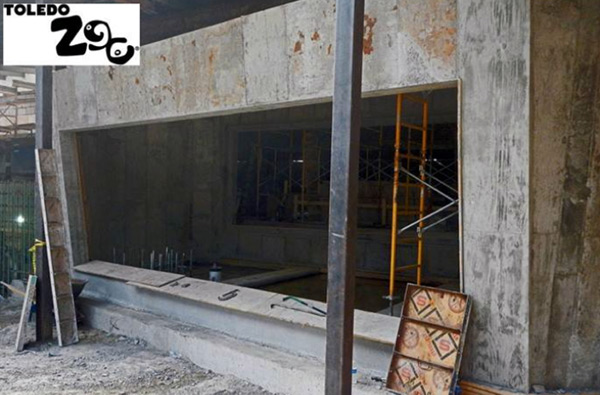 Tropical Pacific Rainbow Reef exhibit
Tropical Pacific Rainbow Reef exhibit
The topic of installment number five was the Pacific Reef Exhibit, with its five expansive viewing windows. Not mentioned was the sixth window—a bubble/dome set in the concrete wall of the exhibit. This clever viewing opportunity will allow visitors to get a 180-degree view of the exhibit by placing their head and shoulders into the dome. The fish will appear closer than they really are, and we expect that children will really enjoy this experience.
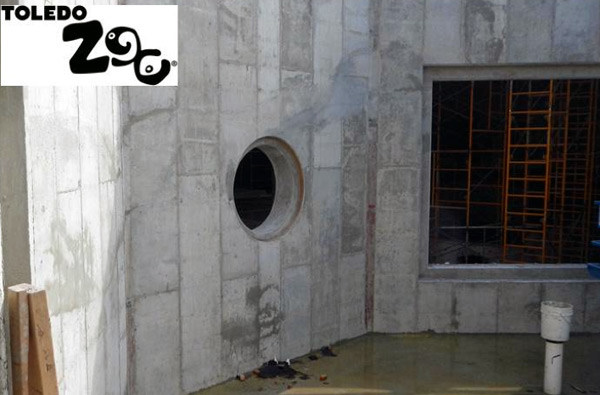 By using these new approaches, the Toledo Zoo is designing its Aquarium to be more interactive and engaging than ever before, helping to inspire visitors’ curiosity and fascination with the world’s aquatic environments.
By using these new approaches, the Toledo Zoo is designing its Aquarium to be more interactive and engaging than ever before, helping to inspire visitors’ curiosity and fascination with the world’s aquatic environments.
Photo Credit: Toledo Zoo


